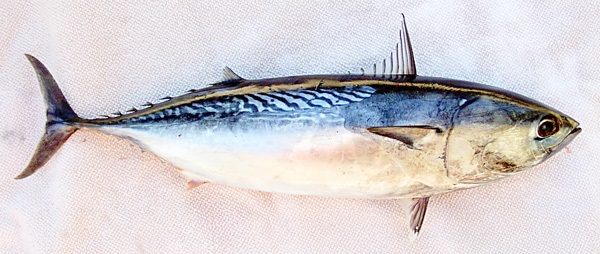A healthy diet should include fish or fish oil as a major source of omega-3 fats, as well as of vitamin D, selenium, and protein, with little saturated fat.
All of the above make fish good for the heart as it lowers blood pressure and protects one’s blood vessels.
Daily recommendations
According to the American Heart Association and to the Dietary Guidelines for Americans, everyone should eat fish twice a week to significantly reduce the risk of heart disease (by 36%).
However, there is an ongoing debate about who should eat tuna and how much is safe to consume, given that fish and shellfish may contain varying levels of methylmercury, pesticide residues, PCBs (polychlorinated biphenyls), and dioxins.

The larger the fish, the more toxic chemicals its flesh will contain, considering its exposure to industrial pollution, as well as its feeding on smaller, contaminated fish. Tuna is a big fish – 15 feet long and weighing more than 1,500 pounds, bluefin tuna are the largest, while the smaller yellowfin and whitefin tuna can reach 6.5 feet in length and several hundred pounds.
Why are these toxins harmful?
Once ingested, the toxins mentioned above have the ability to remain in the human body for decades. Very high levels of these contaminants are dangerous, while lower levels and their effects are still a matter of debate. Thus, according to the Harvard School of Public Health, high levels of mercury are known to impair the development of the brain and nervous system in fetuses and young children, and to damage nerves in adults, while lower mercury levels may increase the risk of cardiovascular disease. The American Heart Association states that the risk of heart disease increases by 60% in men with the highest levels of mercury, while their risk of heart attack increases by 70%.
Moreover, the Harvard School of Public Health, quoting a report from the Institute of Medicine, shows that PCBs and dioxins do not appear to represent a major risk of cancer, even though high blood levels of PCBs can lead to cognitive impairment. Peta states that ingesting other contaminants that can be found in larger fish, such as cadmium, lead, chromium, and arsenic, can cause kidney damage and even cancer.
How much is too much?
As compared to canned light tuna, albacore (or white) tuna contains three times more mercury, whereas according to a 2015 study, the mercury levels in yellowfin tuna have steadily grown over the past decade, as a result of pollution.
That is why the general guideline for young children and women in particular is to limit their tuna consumption. There is a safe exposure limit set by the Environmental Protection Agency, or EPA, in 2001, but this varies from one person to another, and Consumer Reports’ experts argue that it should be lowered in the case of children, and women who are pregnant or of childbearing age.
Thus, according to experts, young women should not eat more than 4.5 ounces (130 grams) of albacore per week, while everyone else should limit their weekly tuna consumption to 24 ounces (680 grams).
The conclusion is not to give up fish, but look for seafood that is lower in mercury than tuna; fatty fish like salmon, herring, mackerel, anchovies, or sardines are healthy replacements.









































